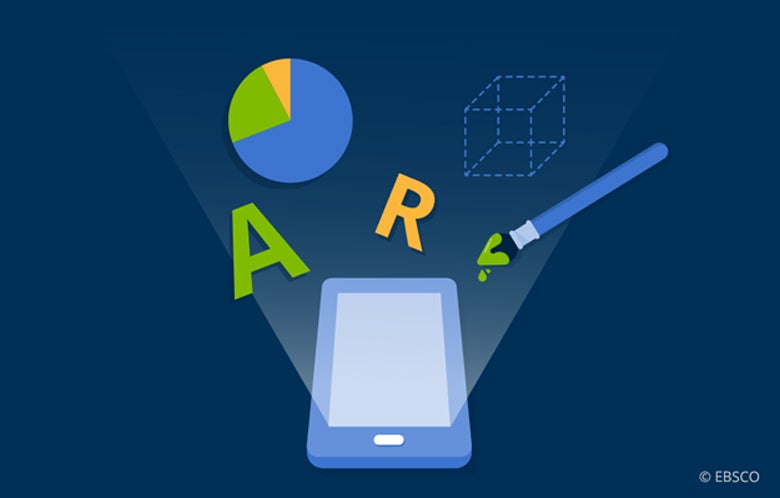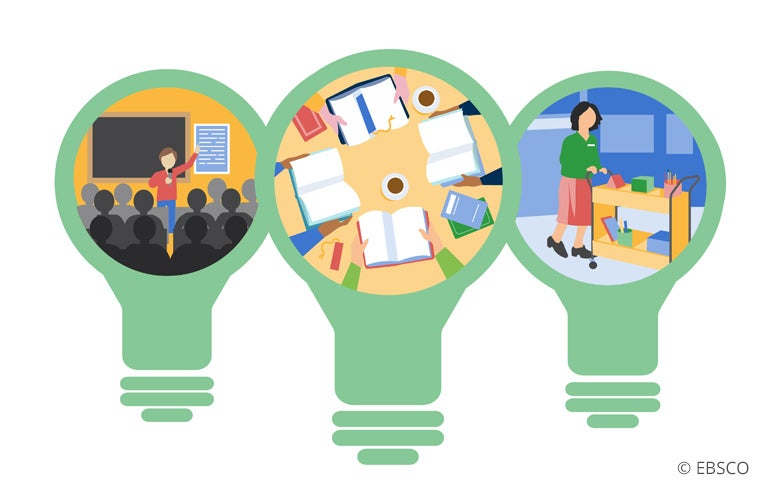Augmented Reality (AR) is a technology that overlays interactive digital elements — such as text, images, video clips, sounds, 3D models and animations — into real-world environments. Not only does AR enhance learning, but it also provides students with opportunities to create their own content.
Teacher librarians and technology integration specialists are often the ones to help their fellow educators integrate new technologies into classroom instruction. A search of the internet reveals a variety of web-based AR tools and apps for almost any subject. Many of these apps promote 21st century skills such as creativity, problem-solving, critical thinking, analysis, coding and iterative testing.
Not only does AR enhance learning, but it also provides students with opportunities to create their own content.
Not only does AR enhance learning, but it also provides students with opportunities to create their own content.
Here are 10 contenders, in alphabetical order:
-
3DBear
Users can build and share scenes using 3D models with this app’s object library or content imported from Thingiverse. Teachers create and assign lessons through a web-based dashboard, and students use the app to create scenes. Ready-made lesson plans cover a range of topics. Read a review. -
Catchy Words AR
Elementary school teachers will enjoy this free word game that combines learning with movement. Without touching the screen, students walk around “catching” letters with their devices to solve word puzzles. - CoSpaces Edu
This design tool allows students with coding experience to create virtual 3D worlds, create infographics and tell stories through virtual exhibits and tours. Teachers create a class and post assignments. Images and 360-degree photos can be uploaded, and a companion app is available.
- Froggipedia
Using life-like visuals, this app allows biology students to explore the life cycle and anatomy of a frog through a guided virtual dissection. Read a review.
- JigSpace
This educational app offers a library of knowledge, and each “Jig” is a 3D presentation of how everyday things work, explained in simple steps and viewed visually in augmented or virtual reality. Students can view the human heart, the solar system, inventions and other objects from a variety of angles. Read a review.
- MERGE Cube
MERGE Cube lets students “hold a hologram” in their hands. Available through popular retailers for about $15, the foam cube features unique designs on each side. When held in front of a device’s camera while using one of MERGE’s apps, the cube transforms into a digital 3D object or scene that can be viewed from different angles by rotating the cube. With a MERGE Cube, teachers can create lessons and activities to explore STEAM concepts, illustrate complex systems, and enable students to “experience” history or science. For example, the DinoDigger app has students excavate the earth to uncover dinosaur fossils. The HoloGlobe app lets students “hold” NASA and NOAA visualizations of the earth in the palm of their hands. (Educators may also check out Google SkyMap, a hand-held planetarium that can be used to identify stars, planets, nebulae and more.)
- Metaverse
Recommended for ages 13 and older, this free platform (website and app) allows users to create and share interactive content in augmented reality. Educators can use the tool to gamify learning through warm-up exercises, review games or formative assessments. Students can download the free mobile app to participate in teacher- or user-created games, location-based experiences, scavenger hunts, geocaching and more. Read a review.
- Moatboat
Moatboat is creation engine app for augmented reality and virtual reality. The user gives simple commands to add objects and give them behaviors. Users can then “place” their creations on a table to share with others.
- Orb
Tech-savvy teens bring imagined spaces to life with this app. Students add 3D shapes that, from the device’s screen, appear to be part of the real world. Users can apply custom colors to the shapes, manipulate them with rotation tools and combine them. The final creation can be downloaded, saved as an image or video, shared or exported to a 3D printer. Read a review.
- World Brush
This AR experience lets people “paint” the world around them. Paintings are created in the app, remain anonymous and are only visible where they were rendered. Art teachers may assign students to create virtual drawings anchored to real objects and locations on their school campus.
For a list of additional AR and VR tools for the classroom, see this article on ISTE’s blog. To support student research, EBSCO’s Science Reference Center also contains articles about technological innovations that use AR. Librarians and educators can also find hundreds of articles about integrating AR into classroom instruction in EBSCO’s Education Source database.


